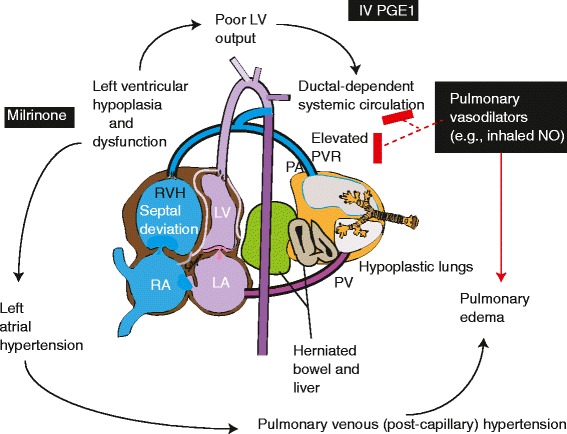Fig. 1.

Patients with left sided CDH may have left ventricular hypoplasia and dysfunction. Such dysfunction may be associated with elevated left atrial pressure, pulmonary venous hypertension and poor LV output. The systemic circulation may be dependent on right to left ductal flow due to elevated PVR. Pulmonary vasodilators such as inhaled NO may result in pulmonary arterial dilation and exacerbate pulmonary edema in the presence of pulmonary venous hypertension and decrease ductal-dependent systemic flow (“ductal steal”). IV PGE1 maintains ductal patency leading to reduced RV afterload and support systemic circulation. Milrinone, by improving left ventricular diastolic and systolic function reduces left atrial pressure and also dilates pulmonary vasculature resulting in improved oxygenation in CDH. The presence of hypoplastic lungs with remodeled pulmonary vasculature and volutrauma, barotrauma and oxygen toxicity contribute to poor response to pulmonary vasodilator therapy. We hypothesize that a combination of milrinone with “gentle” ventilation will improve oxygenation and response to pulmonary vasodilator therapy in CDH. RVH – right ventricular hypertrophy; RA – right atrium; LA – left atrium; LV – left ventricle: PVR – pulmonary vascular resistance; NO – nitric oxide; PA – pulmonary artery; PV – pulmonary vein; IV PGE1 – intravenous prostaglandin E1 (alprostadil)
